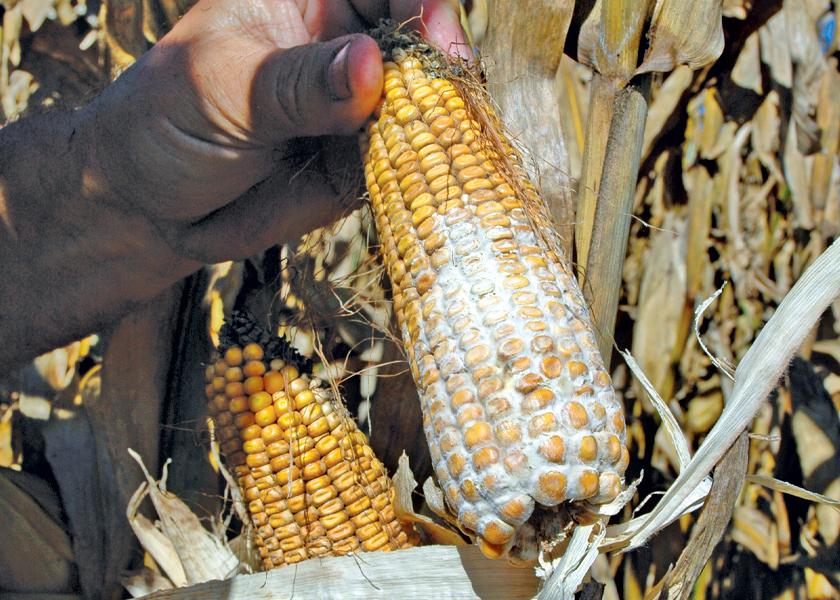Mycotoxins: What You Need to Know to Protect Your Swine Operation Now

By Omarh Mendoza, Director of Nutrition at The Maschhoffs
Although mycotoxin monitoring makes headlines each harvest season, it’s a topic that should stay top of mind year-round. Active mycotoxin surveillance is key to protecting the health and productivity of your swine operation.
What are mycotoxins?
Mycotoxins are naturally occurring toxic compounds produced by various fungal species or mold that grows on various agricultural commodities. For example, grains like wheat, barley, corn and their co-products such as dried distiller’s grains with solubles (DDGS) can be contaminated with mycotoxins.
The growth of fungi can happen before harvest, after harvest or during storage. However, for the mycotoxins to develop, each species of fungi needs specific temperature and humidity conditions at the right stage of plant development. This means the presence of mold does not necessarily warrant the presence of toxins. Most mycotoxins are chemically stable and can survive ingredient and feed processing, which allows them to make their way to finished feed that is fed to livestock species.
What are the risks for pigs?
Of all the mycotoxins that have been identified, only a select few are considered a risk that can impact the health and productivity of pigs. The extent of their impact depends on the age and health of the pigs, in addition to the concentration of the mycotoxins and length of duration at which they are exposed.
For example, aflatoxin, produced by Aspergillus spp., may cause immunosuppression and liver damage. Deoxynivalenol (DON) or vomitoxin’s effects include reductions in feed intake, refusal or vomit, and zearalenone’s is associated with reproductive dysfunction in gilts and sows, both of these produced in Fusarium-contaminated corn. Fumonisins are present when grain is contaminated with Fusarium verticilloides and may impact the respiratory system. Others include ochratoxin (Aspergillus ochraceus), with symptoms including kidney function damage, and T-2 toxin (Fusarium sporotrichioides) that may incur oral lesions or dermatitis of snout.
It is because of these effects the FDA has determined actions levels for aflatoxin in feed, as well as advisory levels for DON and fumonisins. In practical diets fed to pigs, most of the concerns entail the presence of a combination of different mycotoxins, ranging from low to moderate levels. However, exposure to very high levels of mycotoxins is possible, so it's vital to measure and manage.
How are mycotoxins measured and managed?
To understand exposure levels of mycotoxins in feed, ingredients such as corn and coproducts need to be routinely sampled and analyzed. Mycotoxin presence in feed ingredients is variable because they are not evenly distributed in grains. Sampling protocols must take this into consideration. Standard operating procedures (SOPs) for sample collection should be established and implemented at feed mills. SOPs need to include sending samples for analysis with regular frequency depending on the time of the year (harvest vs. non-harvest) and the type of ingredient and source for grain coproducts.
As part of these recommendations, laboratory analysis data needs to be summarized by the feed mill and/or geography, to define potential risks. This should be followed by management and intervention strategies for risk reduction. One example is treatment of grain utilizing mold inhibitor products, however, other control or management methods include screening and cleaning of grains, replacement of sources of ingredients, diet formulation approaches and inclusion of mycotoxin binders in the diet.
Understanding mycotoxins and potential risk in ingredients going into swine feed allows mitigation strategies to be put in place. Consult with grain management specialists and nutritionists regarding management and mitigation for mycotoxins.
Learn More: Kansas State University Swine Nutrition Guide: Mycotoxins in Swine Diets







